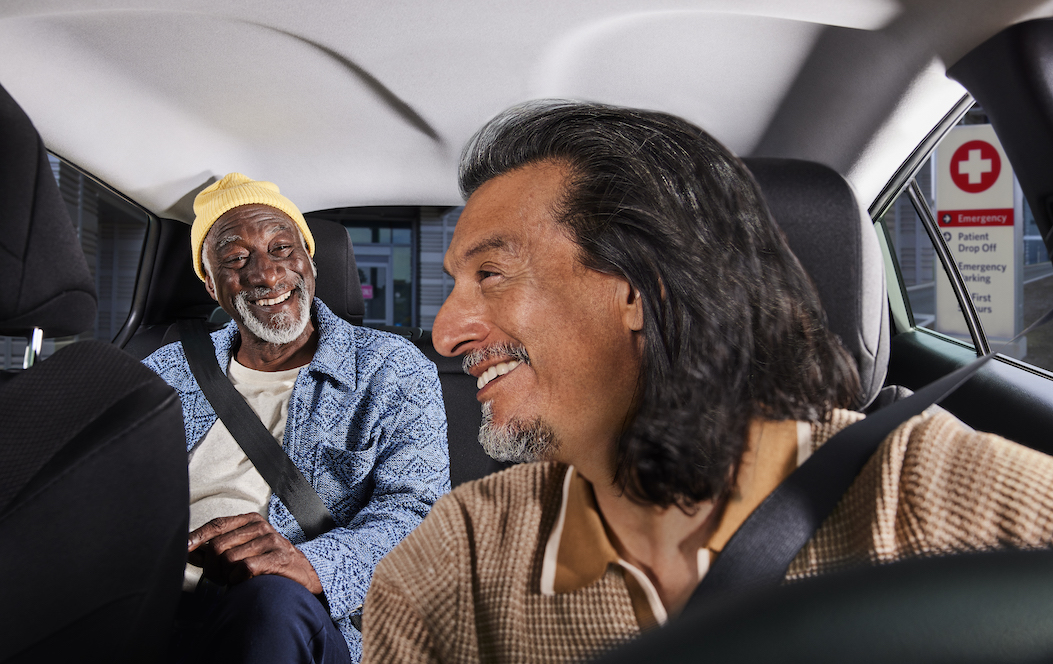Lyft’s Impact on Social Drivers of Health

The healthcare field has made great strides in recognizing and addressing the many factors that influence one’s health beyond the doctor’s office. Research indicates that social drivers of health (SDOH) affect 80-90% of health outcomes, while medical care accounts for only 10-20% of modifiable factors that influence health.1 Individuals and communities that face barriers to accessing adequate healthcare and health-promoting services experience significantly worse health outcomes, which contributes to widespread disparities and inequalities.2
Lyft Healthcare partners with thousands of organizations across the healthcare ecosystem to address SDOH – access to care, services, and support that improve health and wellbeing – by providing access to transportation to millions of people, including Medicaid and Medicare beneficiaries.
Unmet transportation needs are associated with lower quality of life, higher rates of mental and physical illness, higher ER utilization, and a higher likelihood of chronic conditions. 5.8 million people delayed medical care in 2017 due to a lack of transportation access.3 Furthermore, adults with Medicaid coverage are 8x more likely to delay care due to a lack of transportation when compared to those with private healthcare coverage. (5.8% Medicaid versus 0.7% private coverage).4 Lack of access to transportation and subsequent delay of care exacerbates disease prevalence and severity and results in greater utilization of high-acuity care and higher hospitalization rates.
Additionally, research shows that transportation insecurity disproportionately affects individuals who are low-income, older, people of color, and people with chronic illnesses or disabilities.5 66% of people that report transportation barriers are below the federal poverty level. Improving access to transportation is critical to improving health and health equity, which drives Lyft’s commitment to the healthcare space.
Increasing Access to Healthcare & Medical Services through Patient Transportation
Lyft Healthcare works closely with State Medicaid agencies, health plans, and transportation managers to help address inequalities in the accessibility of healthcare services. In 2019, Amerigroup Tennessee and UnitedHealthcare Community Plan partnered with TennCare, Tennessee’s State Medicaid Agency, to launch a rideshare pilot with transportation manager Tennessee Carriers Inc. (TCI), leveraging Lyft as the sole rideshare provider.
Initial clinical results from Amerigroup Tennessee illustrate the role that rideshare plays in increasing access to essential medical services, reducing gaps in primary care, and facilitating improvements in screening rates.6 Study results are as follows:
- Trips to Essential Medical Services:
- 56% of rides on the Lyft platform were to dialysis services, specialists, and primary care physicians
- Immediate & Long-Term Increase in Primary Care Visits:
- 13% increase in primary care physician visits within the first three months of the pilot
- 63% increase in primary care physician visits year-over-year
- Reducing Gaps in Primary Care:
- 73% increase in the number of beneficiaries who visited a physician for preventative or outpatient services
- Positive Changes in HEDIS Metrics:
- 13% improvement in cervical cancer screening
- 21% improvement in the management of blood glucose levels in people with diabetes
Leveraging Transportation to Help Address Other Drivers of Health
Lyft Healthcare’s relationships with innovative organizations demonstrate that the benefits of improving access to transportation also mitigate the effects of other SDOHs, including food insecurity, social isolation and loneliness, and unemployment.
Addressing Food Insecurity
Lyft’s Grocery Access Program provides access to free and discounted rides to help people in food-insecure areas reach stores with healthy food options. It also supports local non-profit organizations that provide hands-on support to their community members. Lyft has provided access to over 60,000 rides to and from grocery stores through this program.
Improving Seniors’ Quality of Life
Social isolation and loneliness are critical, yet often overlooked, contributors to one’s health and well-being, especially among older adults. A three-month study funded by the AARP Foundation provided access to unlimited rides on the Lyft platform to 150 Keck Medicine at USC chronic disease patients who were over the age of 60 and had self-reported transportation barriers.7 Over 90% of seniors reported improved quality of life due to receiving free transportation from the Lyft network, and over 60% of seniors reported increased social visits, which reduced feelings of social isolation and loneliness.
Increasing Job Access
Lyft’s Jobs Access Program aims to close transportation gaps and rebuild communities. The ability to commute to well-paying or skill-matched work is a significant factor in economic mobility. Since 2019, Lyft has provided access to more than 30,000 free and discounted rides on the Lyft platform through our Jobs Access Program to help unemployed individuals get to and from job training programs, interviews, and/or the first three weeks of new employment.
Join Lyft Healthcare in our effort to help improve health and health equity by reducing transportation insecurity and increasing access to health-promoting services. Learn more.
- “Social Determinants of Health 101 for Health Care: Five Plus Five.” National Academy of Medicine. Sanne Magnan. (2017)
- ”Social Determinants of Health.” Healthy People 2030, U.S. Department of Health and Human Services, Office of Disease Prevention and Health Promotion.
- “Transportation Barriers to Health Care in the United States: Findings From the National Health Interview Survey, 1997–2017.” AJPH. Wolfe, et al. (2020)
- “Medicaid Coverage of Non-Emergency Medical Transportation.” MACPAC. (2019)
- “Medicaid Coverage of Non-Emergency Medical Transportation.” MACPAC. (2019)
- “Improving Outcomes in Medicaid through Innovative Transportation Partnerships” Elevance Health Public Policy Institute. (2021)
- “Health Impacts of Unlimited Access to Networked Transportation in Older Adults” Journal of mHealth. Saxon, et al. (2019)